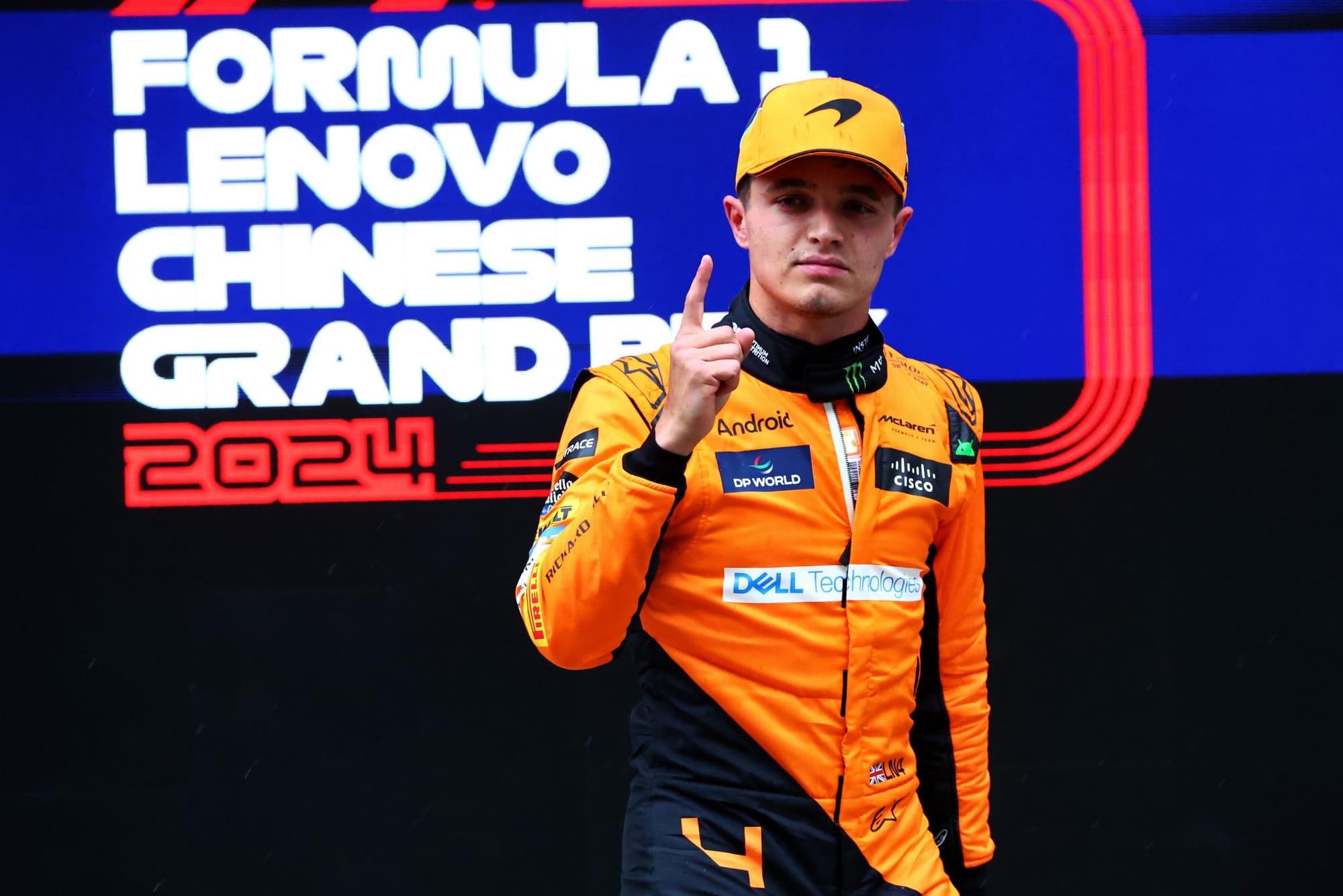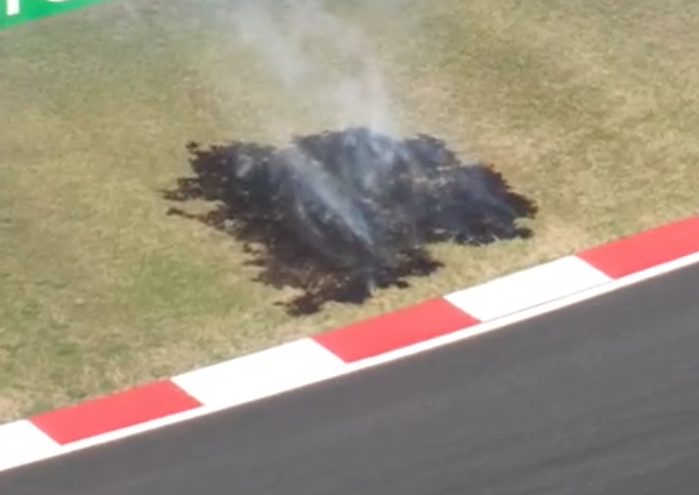Had Oscar Piastri’s car not suddenly selected neutral as he was accelerating out of the hairpin - its control systems momentarily confused by the excess wheelspin in the gripless SQ3 conditions - McLaren could well have had both cars at the front of the grid for the Chinese Grand Prix sprint.
Instead, Piastri starts seven places behind his polesitting team mate Lando Norris. Norris’s initially deleted/subsequently reinstated lap was 1.3 seconds clear of second fastest Lewis Hamilton in the Mercedes and over two seconds quicker than the usually dominant Red Bull of Max Verstappen, who starts fourth, separated from Hamilton by Fernando Alonso’s Aston Martin.
In an SQ3 session rendered crazily unpredictable by the combination of rain and a protective circuit coating which offered up very little grip generally, but especially so in the wet, it was even more about tyre temperatures than normal.
This is where the McLaren was so good. It gave its drivers nothing like the problems the Red Bull gave Verstappen, who confirmed afterwards that: “I just had no temperature in the tyres. They just didn’t switch on. It was like driving on ice.” The Ferrari drivers - Carlos Sainz and Charles Leclerc, fifth and seventh respectively - were similarly hampered.
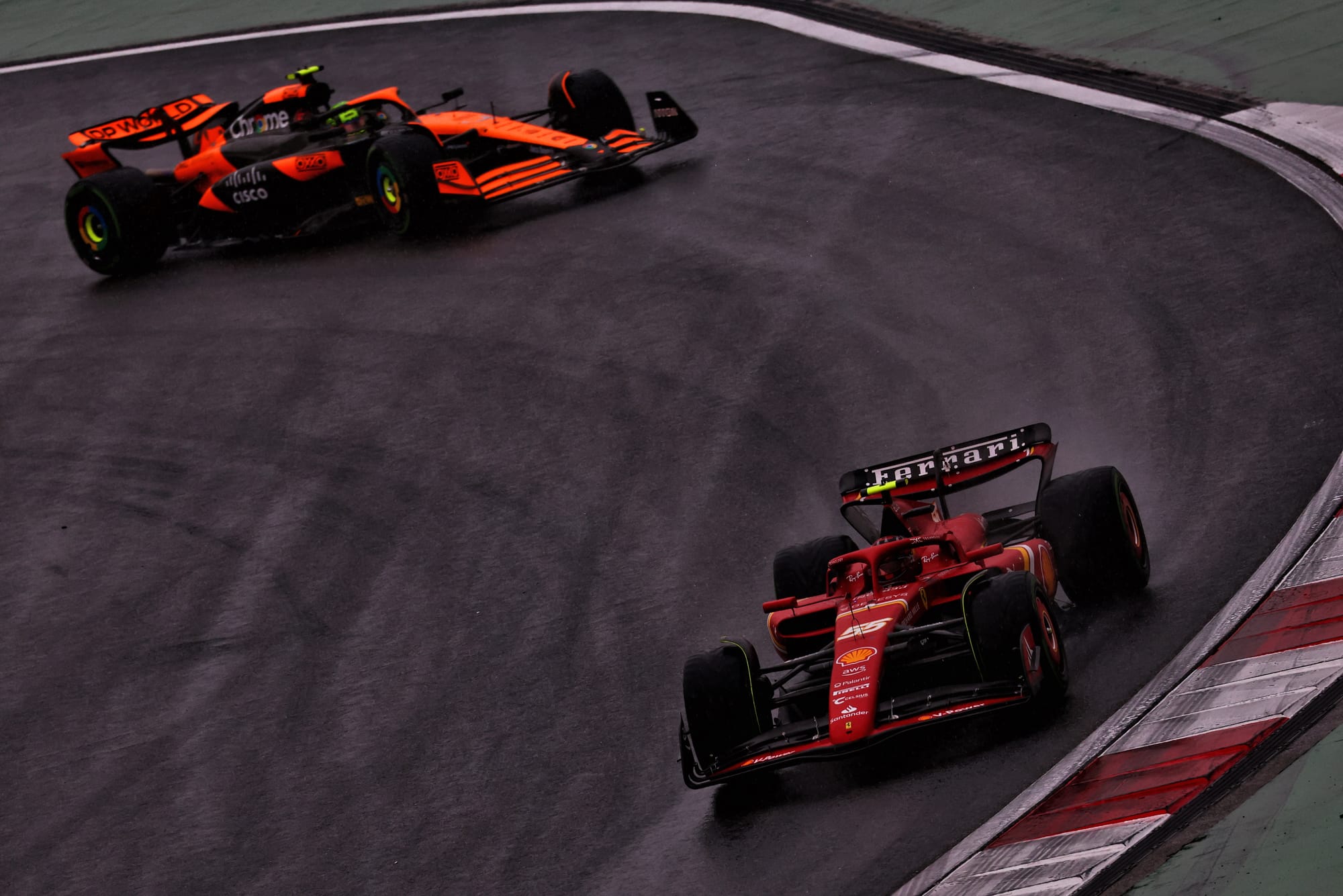
So, where is McLaren really at? In the dry of the practice session Piastri went second quickest. But that was 0.3s off the session-heading Lance Stroll, indicating that those headline times don’t tell us much either, with everyone on wildly different programmes. In SQ2 on an initially dry track Piastri and Norris were fourth and fifth respectively, Piastri around a quarter-second slower than Verstappen and Leclerc. That looks fully representative of the real underlying picture in the dry.
But should the Sprint race be wet, it’s Norris’s to lose. Why is the McLaren so good around here in the wet? That’s a combination of the team’s wing choice and the enhanced significance of that given by the aforementioned track surface coating.
The McLaren (like the Sauber - both of which made it into Q3) is carrying a lot more rear wing than Red Bull or Ferrari. For the traits of the McLaren car, this is a very logical choice, especially so given the possibility of rain.
Even when carrying a comparable rear wing to the Red Bull and Ferrari, the McLaren lacks DRS performance. It’s highly competitive down the straights without DRS but as soon as that feature is enabled, it loses out badly. The following table shows a comparison from practice through the speed trap at the end of the long back straight before Turn 14.
SPEED TRAP FIGURES
| No DRS | DRS | DRS gain | |
| Verstappen | 280km/h | 321km/h | 41km/h |
| Norris | 284km/h | 315km/h | 31km/h |
As soon as the cars pass the beginning of the DRS zone, around one-third of the way down the straight, their speeds diverge and the difference just keeps building. In that DRS section alone, the McLaren loses 0.126s to the Red Bull. Red Bull’s terminal speed is merely competitive (with Aston Martin at 322km/h, Red Bull and Ferrari 321km/h, Mercedes 320km/h). It’s McLaren which is the outlier among the top teams.
Given McLaren’s DRS deficit - which has been evident all season - it’s logical that the team’s compromise between straightline speed and downforce would err more towards downforce than Red Bull’s (or Ferrari’s or Aston’s). The weather forecast will have just made it even more logical - and in SQ3 the conditions came to it.
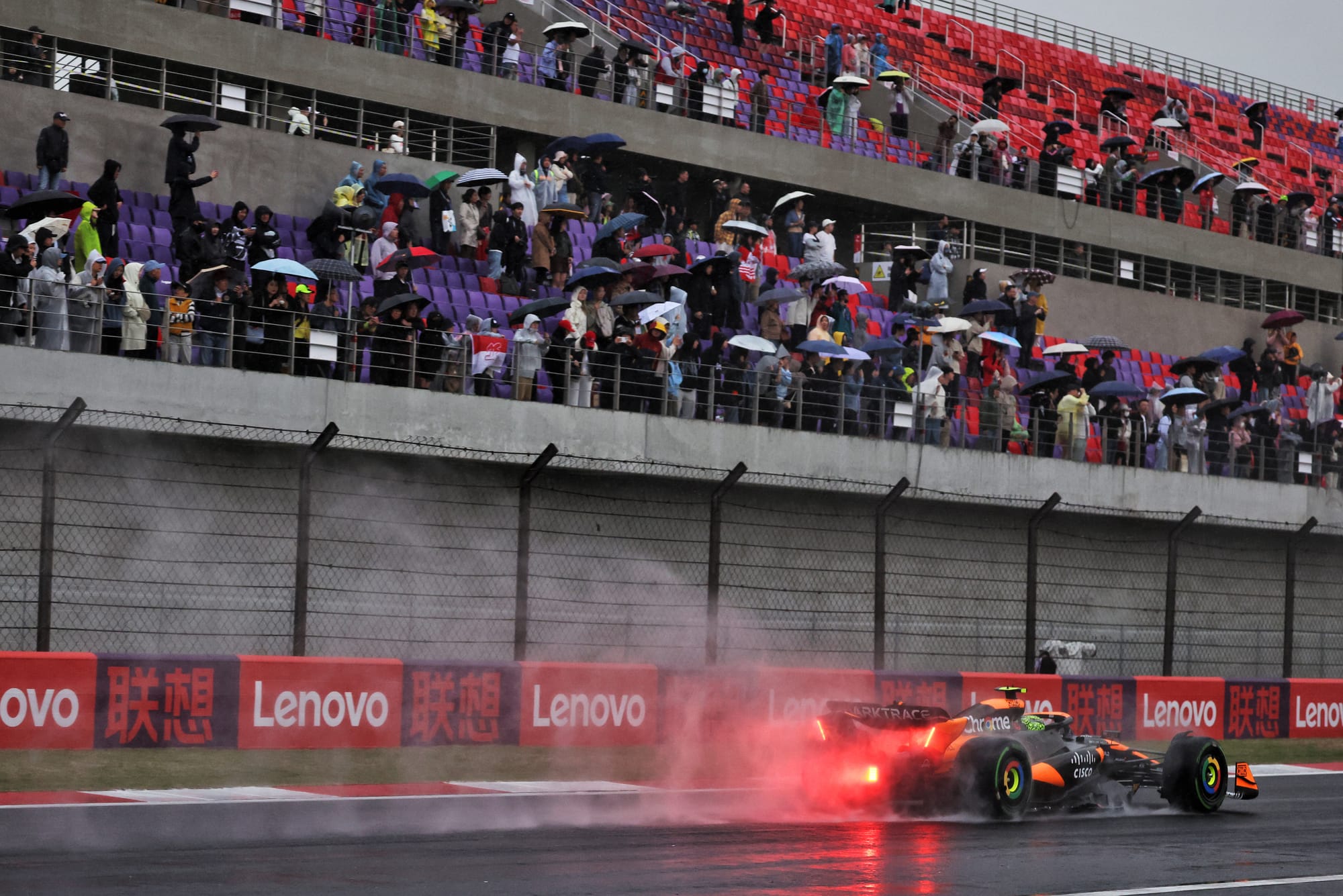
That much could have been foreseen. What was not were the effects of the new track coating. This was applied in early 2023 to protect the track surface from the effects of the weather. It made for a significant grip reduction in the dry, but an even bigger one in the wet.
Whereas an intermediate lap is usually around 10% slower than a slick-tyred one, the SQ3 times were around 20% off. And it’s not because the rain was extreme and required wets. It was simply the reduction in grip from dry to wet was much bigger than usual, as confirmed by Pirelli’s Simone Berra. “[The coating] changed the micro and macro roughness of the surface. It was reduced by 15%... it’s quite slippery and even more so when it’s wet.”
Just as a wet track rewards a higher wing level more than a dry track, so an extra slippery wet track rewards that higher downforce level even more. So McLaren got a double hit of goodness and that was enhanced further by how the greater downforce helped generate the tyre temperatures quicker in a session where that was a real problem for everyone.
The surface coating is already wearing out on the racing line and so even if the sprint is wet the McLaren probably won’t have as big an advantage as in qualifying. But nonetheless, there’s no reason why it shouldn’t be the fastest car out there.
But if it’s dry, not only does that laptime advantage disappear, but it suffers further through the enabling of DRS, making it extremely vulnerable to being overtaken into the Turn 14 hairpin.
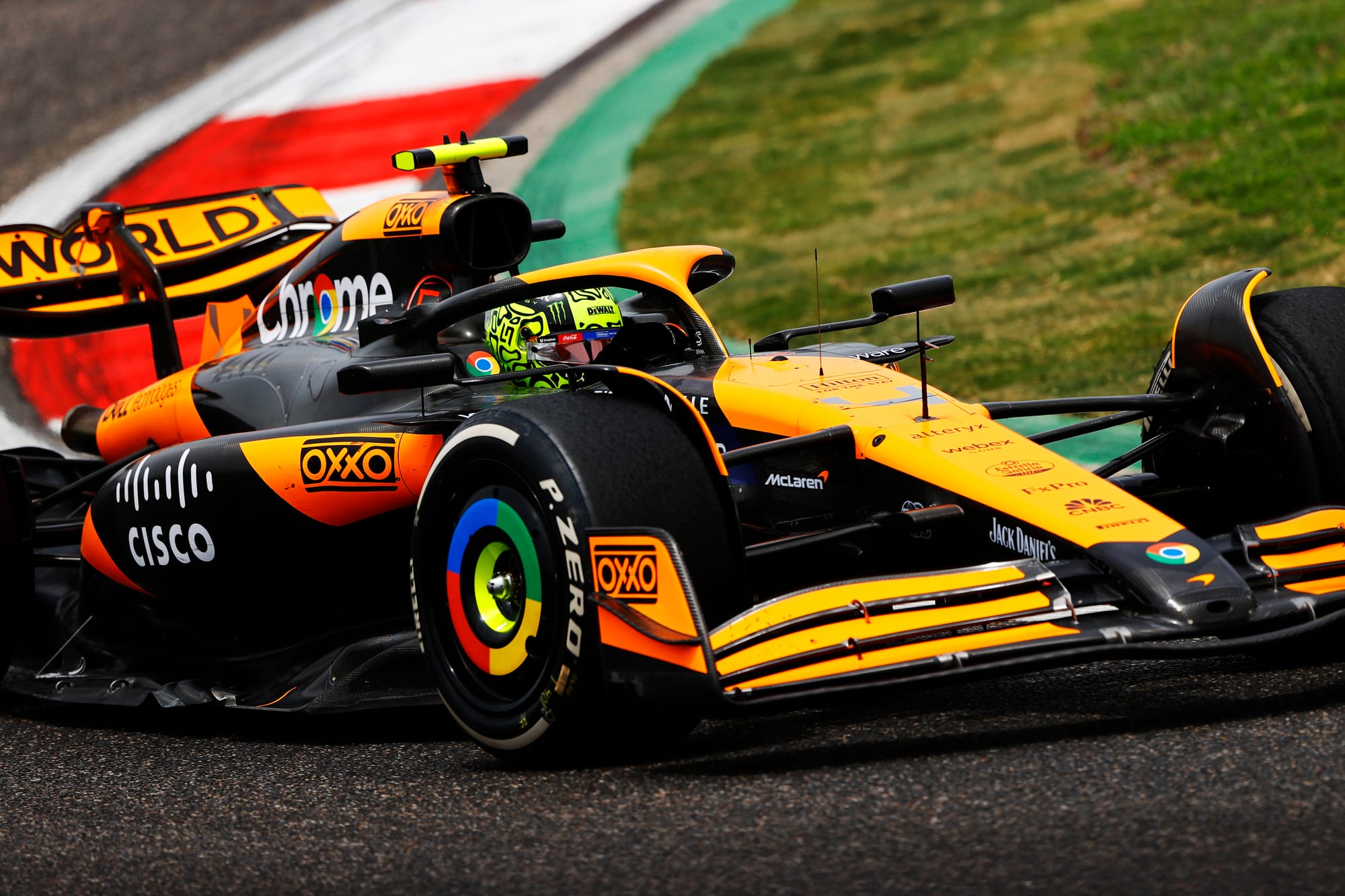
The dry long runs of practice show Norris as fastest, but that’s misleading. The hard tyre looks by far the best compound over a stint - and that’s what he was on (together with the Mercedes and Aston Martin drivers). The faster Red Bulls and Ferraris were on the mediums and softs respectively.
So behind the apparently crazy order, there is an underlying normality.

